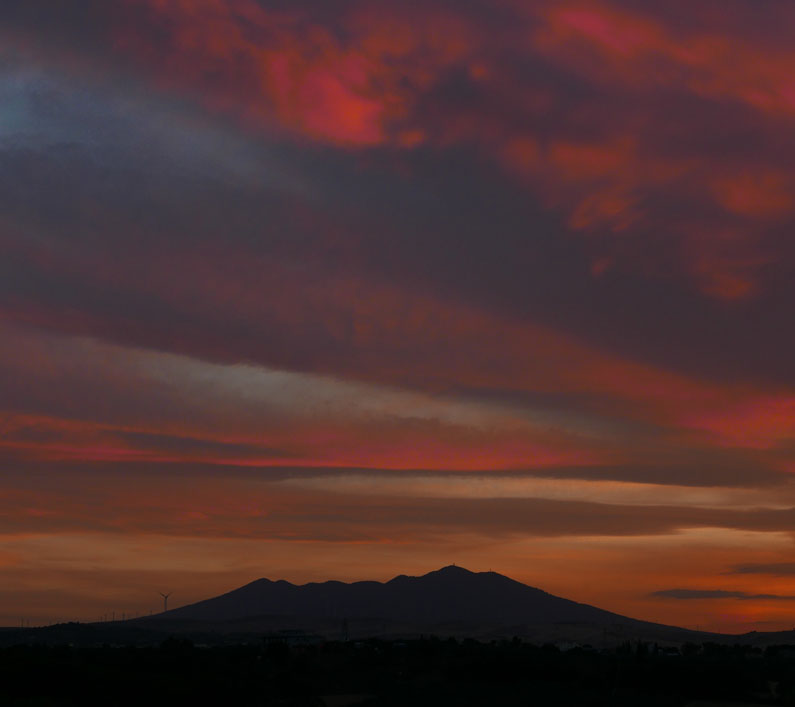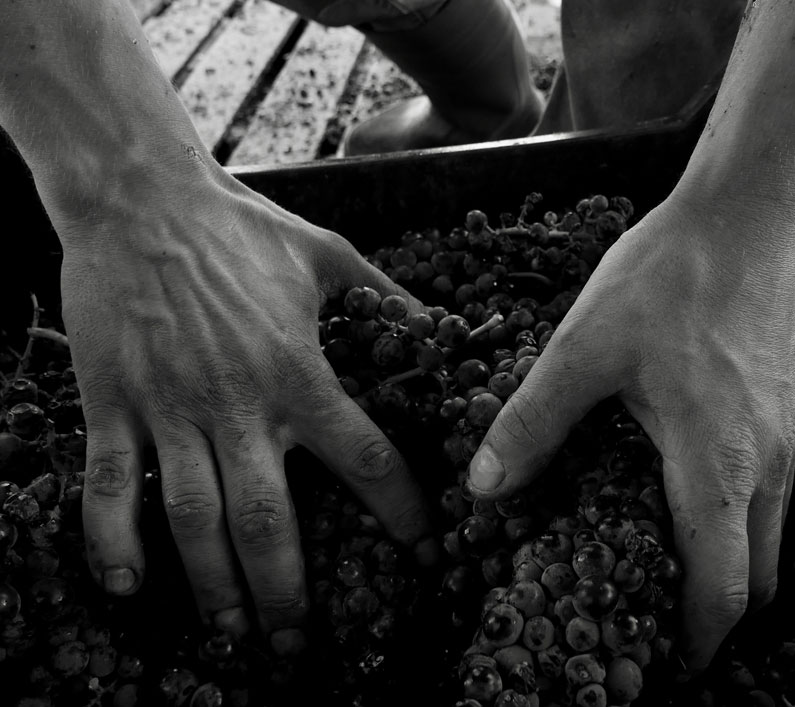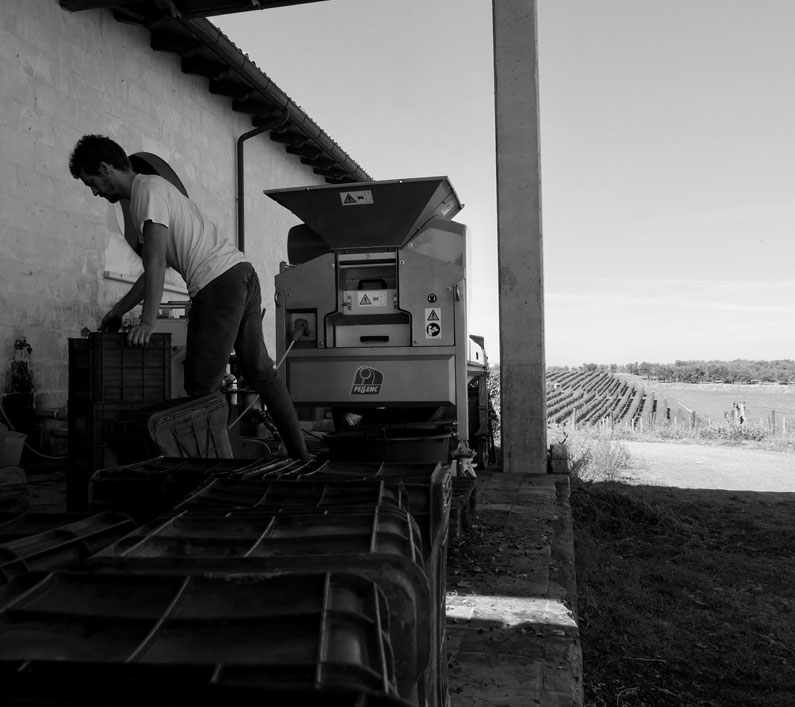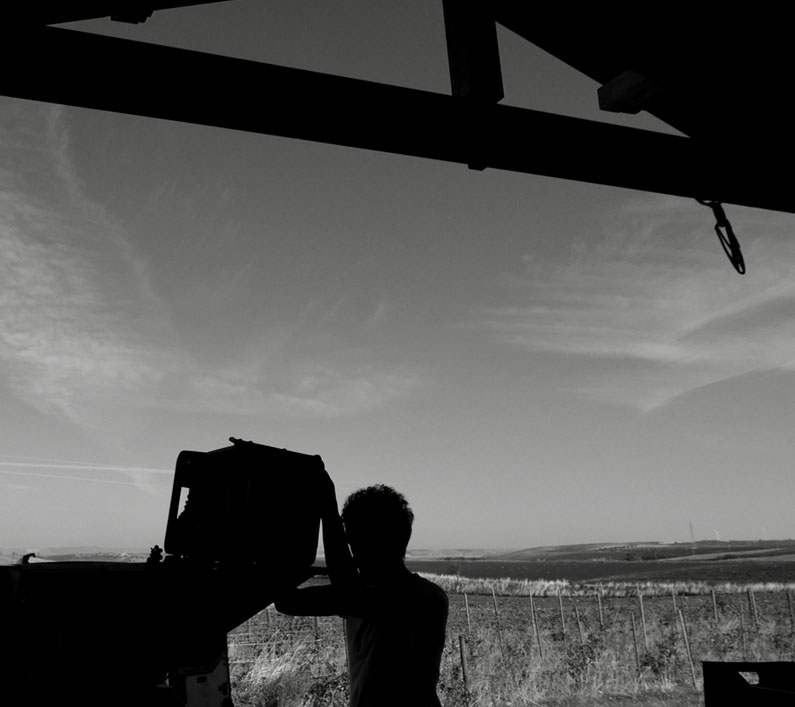
The mention Vulture conventionally indicates a historical-geographical sub-area of Melfese (in Basilicata, province of Potenza) that develops on the slopes of the homonymous Mount, a volcano no longer active from different eras.
The summit (1326 meters above sea level) dominates a wide territory of medium and high hills located at the northern end of the regions, at the intersection of the border between Puglia and Campania, marked by the Ofanto river. It is an isolated and external position compared to the other coeval tirrenic complexes: it is not
technically an extinct volcano, as secondary phenomena have also occurred in the contemporary period, up to the first half of the nineteenth century.
The vulture is a stratovolcano, originating in the Pleistocene for cracking between 800 thousand and 650 thousand years ago. With the raising of the ground due to the filling of the magma chamber, three basins will be formed in Venosa, Melfi and the largest in Atella. Over time, the products of the continuous eruptions will settle in the basins, making the waters overflow in the valley of the Ofanto. The last big explosive eruption dates back to about 140 thousand years ago with the formation of the large circular caldera that today houses the two lakes of Monticchio.
The slopes of the volcanic structure degrade to the west towards the Ofanto and the Anta Irpinia and to the east towards the Apulian plain, giving rise to deformed and widespread reliefs. Covered by lush vegetation, favored by the high fertility of lava soils, they create ideal conditions for agricultural activities, viticulture and olive growing in the first place.
Vocation further strengthened by significant water availability: numerous waterways and lake basins including two lakes of Monticchio (located about 600 meters above sea level, where the main crater stood during its final phase of activity).
The extraordinary mineral richness of the layers gives the water of the Vulture a natural effervescence and an unmistakable acid character. Encouraging the development of flourishing bottling industries, some of which today belong to major multinationals, whose productions are exported throughout Italy, and beyond.
The wine-growing area is protected by two distinct PDOs but on balance “sisters”.
Aglianico del Vulture Superiore Dop-Docg
Aglianico del Vulture Dop-Doc
Established in 1971 (modified in 1987, 2010, 2011 and 2014), the Controlled Denomination of Origin Aglianico del Vulture protects the wine-prince of Basilicata as well as one of the most renowned in the southern peninsular. In 2010 it was substantially “doubled” with the recognition of the Controlled and Guaranteed Denomination of Origin Aglianico del Vulture Superiore (changes in 2011 and 2014).


The main differences between the two production specifications concern:
- The types provided: for the Doc Aglianico del Vulture Spumante; for the Docg Aglianico del Vulture Superiore and Aglianico del Vulture Superiore Riserva;
- The maximum yield in grapes and wine: for the Doc 100 q.li/ettaro (grape production) and 70% yield in wine; for the Docg 80 q.li/ettaro (grape production) and 65% yield in wine (maximum 52 Hl / hectare);
- The minimum period of obligatory aging: for the marketing DOC allowed starting from the 1st of September of the year following the one of production of the grapes;
- for the marketing DOCG allowed from 1 November of the third year following the production of the grapes, after an obligatory refinement of at least 12 months in wood and at least 12 months in the bottle (5 years in total and at least 24 months in wood for the type of reserve);
- Minimum total alcohol content: for Doc 12.50%, for Docg 13.50% (Superiore and Superiore Riserva).
The production areas of the two DOP are instead totally overlapping.
They include 15 municipalities located between the slopes of Vulture and the first offshoots of Piana Pugliese: Acerenza, Atella (excluding the three administrative islands of Sant’Ilario, Riparossa and Macchia), Banzi, Barile, Forenza, Genzano di Lucania, Ginestra, Lavello, Maschito, Melfi, San Gervasio Palace, Rapolla, Rionero in Vulture, Ripacandida and Venosa.
This is a large territory that presents a significant morphological variability. The middle mountain, located in the south-west, is represented by the ridge of Mount Pierno-Santa Croce (the highest peak in the area with its 1,407 meters).
The actual volcanic area includes as mentioned the Monte Vulture, a conical relief that extends for about 45,000 hectares and is furrowed by a series of valleys, with the crater containing the two lakes of Monticchio located on the western slopes.
The clayey hills are composed of reliefs with soft shapes and are positioned between 500 and 800 meters. It is the cross-section between the middle mountain and the so-called Fossa Bradanica, formed by the wide furrow of the Bradano river, characterized by sandy-clayish sediments from the Plio-Quaternary period.
Finally, in the eastern sector there is an alluvial valley floor, which gradually joins the Ofanto river and the Tavoglie delle Puglie.


Environmental heterogeneity that is naturally reflected in the composition and structure of the soils, difficult to schematize in a perspective of a real “zonation”. Without due methodological clarifications, we can at least distinguish two macroblocks that present interesting points of contact on the geological level.
1. Barile, Rapolla, Rionero in Vulture, Ripacandida, Ginestra, part of the territory of Melfi: lands of volcanic origin, but with significant differences detectable even at close range, linked to the different eruption eras, to the mouths or exit caldera, to the type of activities (eruptive and diffusive), as well as at altitudes, marriages, and so on.
2. The largest portion of the territory of Melfi, Lavello, Venosa, Maschito, Forenza, Acerenza, Palazzo San Gervasio, Banzi, Genzano di Lucania: geologically more composite area, with epiclastic deposits (volcanic sediments from erosion and transport) in the portion closest to volcano, which gradually leave space to lakealluvial material and coastal deposits of Fossa Bradanica.
Given the mountainous nature and its relative distance to the sea, the Vulture has a temperate-cold climate, which varies however depending on the latitude and altitude, becoming more “continental” as you move inwards.
The average rainfall is around 800-1.000 mm per year: they are irregular rainfalls and are mostly concentrated in autumn and winter (often snowy), with significantly higher rainfall indices in the north-west quadrant.
Summers are quite hot, with significant temperature ranges in the weeks before the Aglianico harvest, usually carried out between the second half of October and the first ten days of November.


The incredible variety of soil, geoclimatic and viticultural conditions has led producers in the area to adopt a further regulatory tool, able to provide a second level of information on the origin and localization of wines coming from individual circumscribed areas.
It is the system of Indicazione Geografica Aggiuntiva, implemented by the specifications of both denominations (Aglianico del Vulture and Aglianico del Vulture Superiore). They are currently 70, only some of which are regularly claimed by bottling companies.
Among these, it is worth mentioning for historical and productive reasons:
Gelosia, Giardino, La Solagna del Principe, Le Querce, Macarico, Rotondo, Valle del Titolo (Barile); Serra del Monaco (Ginestra); Cerentino, Serra del Prete, Sterpara (Maschito), San Martino (Forenza); Braida, L’Incoronata, Piane dell’Incoronata (Melfi); Piano di Croce, Piano del Cerro (Rapolla); Colonello,
Cugno di Atella (Rionero in Vulture); Caldara, La Balconara, Pian dell’Altare, Piano del Duca (Ripacandida), Notarchirico, Piani di Camera, Piano Regio, Serra del Tesoro (Venosa).
The area registered in the register of DOP is around 1,200 hectares, about half of which are located in the boundaries of the municipality of Venosa. Only a part of the vineyards, however, is currently used for the certified production of Aglianico del Vulture and Aglianico del Vulture Superiore; the annual total is in fact estimated between one million and one and a half million bottles.
